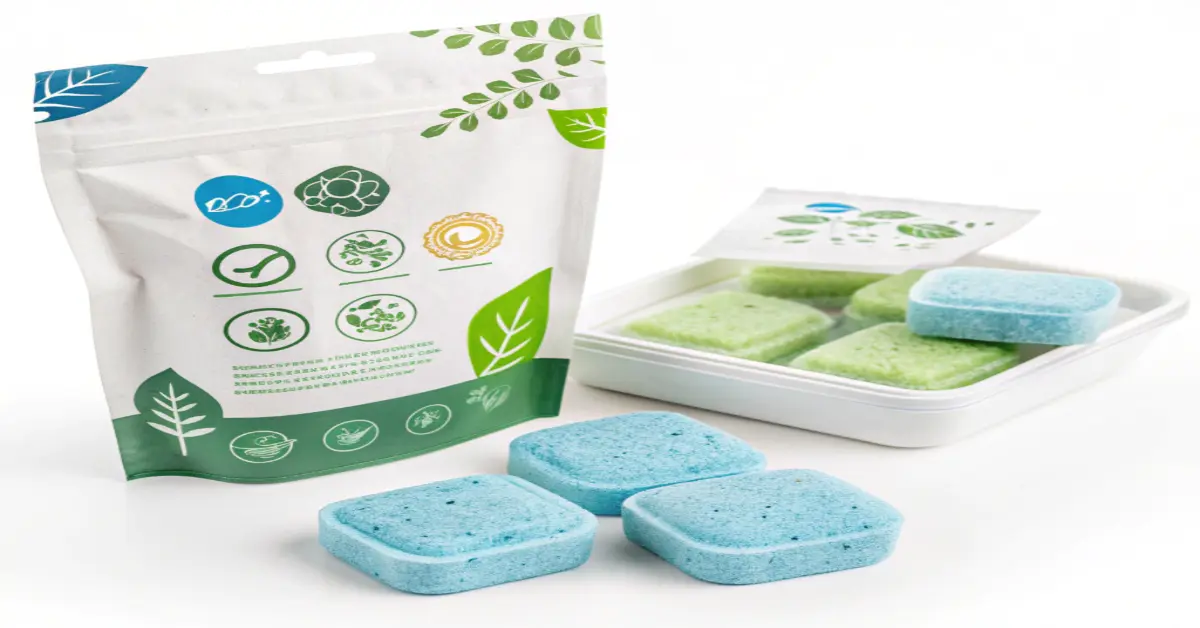Finding the best non plastic dishwasher pods is a game-changer for anyone aiming to reduce their environmental impact without compromising on cleanliness. These eco-friendly pods offer a sustainable alternative to traditional plastic-wrapped options, delivering sparkling clean dishes while minimizing waste.
In this guide, we’ll explore the top non-plastic dishwasher pods that combine powerful cleaning performance with planet-friendly materials, helping you make a smarter, greener choice for your kitchen.
Understanding Non-Plastic Pods
Non-plastic dishwasher pods utilize innovative water-soluble films and sustainable packaging materials to deliver effective cleaning power without contributing to plastic waste. These pods are typically wrapped in PVA (Polyvinyl Alcohol) or other biodegradable materials that completely dissolve in water.
“Every piece of plastic ever made still exists somewhere on Earth. By choosing non-plastic alternatives, we’re breaking this cycle.” – Environmental Science Journal
Key Benefits of Non-Plastic Pods
- Zero Plastic Waste: Eliminates single-use plastic packaging
- Biodegradable Wrapping: Dissolves completely without harmful residue
- Concentrated Formula: Reduces packaging and shipping impacts
- Natural Ingredients: Often contains plant-based cleaning agents
Top Non-Plastic Dishwasher Pod Options
Here’s a comprehensive comparison of leading sustainable options:
| Brand | Wrapping Material | Key Ingredients | Packaging |
| Dropps | PVA | Mineral-based enzymes | Cardboard box |
| Blueland | PVA | Plant-based surfactants | Metal tin |
| Cleancult | PVA | Coconut-based cleaners | Paper box |
| Earth Breeze | Water-soluble film | Natural minerals | Recyclable envelope |
Environmental Impact Analysis
The switch to non-plastic pods creates significant environmental benefits:
- Reduced Plastic Pollution Each household using non-plastic pods can prevent hundreds of plastic pod containers from entering landfills annually.
- Lower Carbon Footprint Concentrated formulas and lightweight packaging reduce transportation emissions significantly.
- Water Impact The biodegradable wrapping materials have been tested to ensure they don’t contribute to water pollution.
“Making the switch to non-plastic pods can reduce your household’s plastic waste by up to 900 pieces per year.” – Sustainable Living Research Institute
Performance Considerations
Effectiveness Factors
Several elements contribute to the cleaning power of non-plastic pods:
- Water Temperature
- Optimal dissolution occurs at 120-140°F
- Complete breakdown of biodegradable wrapping
- Maximum cleaning efficiency of natural ingredients
- Storage Requirements
- Keep in a dry environment
- Avoid extreme temperatures
- Maintain original packaging integrity
Cost Analysis
While non-plastic pods might have a higher upfront cost, consider the following factors:
- Long-term environmental savings
- Reduced need for additional cleaning products
- Bulk purchasing options often available
- Subscription services offering better value
| Usage Level | Traditional Pods Cost/Year | Non-Plastic Pods Cost/Year | Environmental Savings |
| Light | $48 | $60 | 300+ plastic pieces |
| Medium | $96 | $110 | 600+ plastic pieces |
| Heavy | $144 | $160 | 900+ plastic pieces |
Best Practices for Maximum Effectiveness
To get the most out of your non-plastic pods:
- Proper Storage Store in a cool, dry place to maintain pod integrity.
- Correct Loading Ensure proper water flow around dishes for optimal cleaning.
- Temperature Settings Use appropriate water temperature settings for best results.
Innovation and Future Developments
The field of non-plastic cleaning products continues to evolve with:
- New biodegradable materials
- Advanced natural cleaning agents
- Improved dissolution technology
- Enhanced packaging solutions
“The future of cleaning lies in innovation that doesn’t compromise our planet’s health.” – Green Technology Review
Frequently Asked Questions
Q: Are non-plastic pods as effective as traditional plastic-wrapped pods? A: Yes, modern non-plastic pods are formulated to match or exceed traditional pod performance while being environmentally responsible.
Q: How do I store non-plastic pods properly? A: Store them in their original container in a cool, dry place away from moisture and extreme temperatures.
Q: Can I use these pods in any dishwasher? A: Yes, these pods are compatible with all standard dishwashers, including high-efficiency models.
Q: What happens to the pod wrapping? A: The PVA or biodegradable wrapping completely dissolves in water, breaking down into harmless compounds.
Q: Are non-plastic pods more expensive? A: While they may cost slightly more upfront, many users find the environmental benefits and often superior cleaning power worth the investment.
Making the Transition
Steps to Switch Successfully
- Research Available Options
- Compare ingredients and effectiveness
- Read user reviews and experiences
- Consider your specific needs
- Start Gradually
- Try different brands
- Monitor results
- Adjust usage as needed
- Optimize Usage
- Follow manufacturer instructions
- Use appropriate water temperature
- Load dishwasher correctly
Impact of Your Choice
Choosing non-plastic pods creates a ripple effect:
- Reduces plastic pollution
- Encourages sustainable innovation
- Influences market trends
- Protects marine ecosystems
Looking Forward
The movement toward non-plastic cleaning products continues to grow, driven by:
- Consumer awareness
- Environmental regulations
- Technological advances
- Market demand
Your choice to use non-plastic dishwasher pods represents a significant step toward a more sustainable future. While the initial cost might be slightly higher, the environmental benefits and cleaning effectiveness make them a worthwhile investment for environmentally conscious consumers.
Remember, every small change in our daily habits contributes to larger environmental impacts. By choosing non-plastic pods, you’re not just cleaning your dishes – you’re helping to clean up our planet for future generations.

I’m Ian Welkins, a seasoned professional in the kitchen industry. My passion now drives me to provide invaluable insights into the world of top-notch kitchen products. With years of hands-on experience, I’m your go-to source for culinary excellence.











